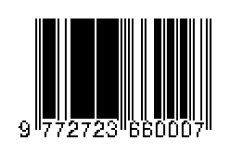Semiotic Analysis of John Fiske on Terrorism in The Film 13 BOM di Jakarta
DOI:
https://doi.org/10.59141/jiss.v6i2.1624Keywords:
Film, 13 Bom dI Jakarta, Terrorism, Semiotics, John FiskeAbstract
13 Bom di Jakarta is an Indonesian movie inspired by Indodax's true story related to terrorism cases in 2015. This movie tells the story of a bomb terror case in Jakarta. In this movie, the Indonesian Counter Terrorism Agency receives a threat from a person who is considered a terrorist. The person said there were 13 bombs that they had spread throughout the city of Jakarta and the person asked for 100 Bitcoin through Indodax or they would explode the bomb every eight hours. This research aims to identify signs related to terrorism in the movie "13 Bom di Jakarta." and understand the meaning contained in these signs. The research method uses a qualitative approach with a semiotic research type. Data was obtained by watching the movie on Netflix and analyzed using John Fiske's semiotic theory to analyze the signs and reveal the meaning contained therein. The results showed that there were 9 scenes of terrorism ranging from bazooka shooting, firearm attacks, and bomb explosions in various locations such as the state money printing car, Jakarta Stock Exchange, MRT, and Soekarno-Hatta airport. At the level of reality, this movie displays the characters of Arok and his friends who are aggressive, mysterious, and cunning. At the representation level, cinematography, lighting, and music techniques are used to create a dramatic and tense feel. At the ideological level, the film represents terrorism as a major threat to the security and stability of the country.
Downloads
Published
How to Cite
Issue
Section
License
Copyright (c) 2025 Laila Jannatul Fajri, Amelia Puspita, Mohammad Ali Wafa

This work is licensed under a Creative Commons Attribution-ShareAlike 4.0 International License.
Authors who publish with this journal agree to the following terms:
- Authors retain copyright and grant the journal right of first publication with the work simultaneously licensed under a Creative Commons Attribution-ShareAlike 4.0 International. that allows others to share the work with an acknowledgement of the work's authorship and initial publication in this journal.
- Authors are able to enter into separate, additional contractual arrangements for the non-exclusive distribution of the journal's published version of the work (e.g., post it to an institutional repository or publish it in a book), with an acknowledgement of its initial publication in this journal.
- Authors are permitted and encouraged to post their work online (e.g., in institutional repositories or on their website) prior to and during the submission process, as it can lead to productive exchanges, as well as earlier and greater citation of published work.















